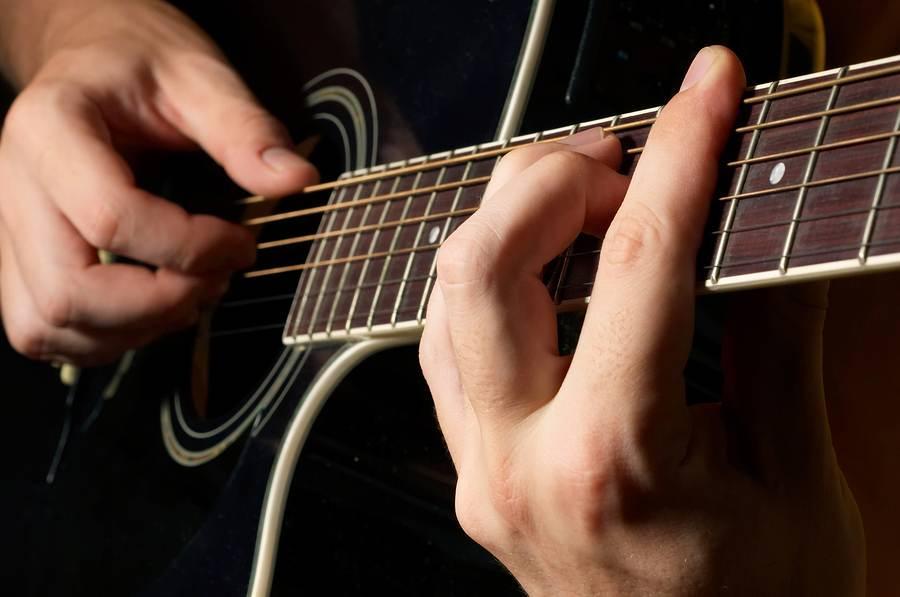
How to Play Barre Chords: A Comprehensive Guide for Guitarists
Learning to play the guitar opens up a world of musical possibilities. One technique that can greatly enhance your playing is mastering barre chords. Barre chords are versatile and powerful, allowing you to play chords all over the fretboard. In this guide, we’ll break down the process of playing barre chords step by step, from understanding the basics to advanced tips. Whether you’re a beginner or an experienced guitarist, this article will help you conquer barre chords and elevate your playing.
Master the melodic potential of the cmaj7 barre chord and enhance your guitar skills today!
Understanding Barre Chords
What Are Barre Chords?
Barre chords, also known as “bar chords,” involve using a single finger to press down multiple strings across the guitar’s fretboard. Unlike open chords, which use a combination of open strings and pressed strings, barre chords are movable and allow you to play the same chord shape in different positions.
Benefits of Learning Barre Chords
Mastering barre chords expands your chord vocabulary and enables you to play songs in various keys. This versatility is essential for guitarists who want to play a wide range of music genres, from rock and pop to jazz and blues.
Common Barre Chord Shapes
Some of the most common barre chord shapes include the E major and minor chords and the A major and minor chords. These shapes serve as the foundation for many other barre chords and are essential for every guitarist to learn.
Getting Started
Essential Finger Strengthening Exercises
Before diving into barre chords, it’s crucial to strengthen your fingers. Practicing finger exercises such as finger presses, finger curls, and finger stretches will prepare your fingers for the demands of barre chords.
Proper Finger Placement
Achieving clean barre chords requires proper finger placement. When using your index finger as a barre, make sure to press down firmly across all the strings. Your other fingers will form the specific chord shape on the fretboard.
Mastering the Fingering Technique
Using the Index Finger as a Barre
The index finger is the key to successful barre chords. To use it effectively, flatten the finger and apply even pressure to the strings. Experiment with the placement of your finger to find the sweet spot that produces clear tones.
Applying Pressure and Achieving Clean Sounds
Barre chords can be challenging at first, as getting all the strings to sound clearly requires practice. Focus on applying enough pressure with your index finger and ensuring that no strings are muted or buzzing.
Common Barre Chord Shapes
E Major and Minor Barre Chords
The E major and minor barre chord shapes are fundamental and often used as the basis for other chords. To play the E major barre chord, barre the entire first fret with your index finger and create the E major shape with your other fingers. For the E minor barre chord, follow the same process but adjust the finger positions.
A Major and Minor Barre Chords
Similar to the E chords, the A major and minor barre chords are essential to master. These chords provide a movable shape that you can take up and down the fretboard, playing different chords with the same shape.
Movingable Chord Shapes
One of the beauties of barre chords is that you can move the same shape to different positions on the fretboard. This enables you to play various chords using the same finger placement, opening up countless possibilities for chord progressions.
Transitioning Smoothly
Tips for Smoother Chord Transitions
Transitioning between barre chords and other chord types requires practice and patience. Start with slower chord changes and gradually increase your speed. Focus on lifting your fingers as a unit and placing them down simultaneously for smoother transitions.
Common Challenges and How to Overcome Them
Struggling with barre chords is normal, especially in the beginning. If you encounter buzzing or muted strings, check your finger placement and pressure. If your fingers fatigue quickly, take breaks and gradually build up strength over time.
Barre Chords and Music Theory
Understanding Chord Progressions
Barre chords open up a world of possibilities for creating chord progressions. Understanding basic music theory concepts such as diatonic chords and chord families will help you build harmonically rich progressions that sound great.
Incorporating Barre Chords into Songwriting
Songwriters can take advantage of barre chords to add depth and variety to their compositions. Experiment with different chord progressions and inversions to create unique sounds that enhance the emotional impact of your music.
Advanced Techniques
Adding Variations to Barre Chords
Once you’re comfortable with the basic barre chord shapes, you can start adding variations. Experiment with different finger placements and extensions to create interesting and complex chord voicings.
Combining Barre Chords with Open Chords
Mixing barre chords with open chords can create a dynamic and textured sound. This blending of chord types is often used by experienced guitarists to add dimension to their playing.
Improving Your Barre Chord Playing
Practicing with Songs
Choose songs that incorporate barre chords to practice your new skills in a musical context. Playing along with your favorite tunes will improve your timing and help you apply barre chords in real-life scenarios.
Using a Metronome for Timing
Timing is crucial in music, and a metronome is a valuable tool for improving your sense of rhythm. Practice playing barre chords along with a metronome to develop a strong and consistent tempo.
Troubleshooting and Tips
Avoiding Finger Fatigue
Barre chords can be physically demanding, especially for beginners. Gradually increase your practice time to build finger strength, and take breaks to prevent overexertion.
Adjusting Your Guitar Setup for Easier Barres
A well-set-up guitar can make playing barre chords easier. Ensure that your guitar has the proper string gauge, action, and neck curvature to facilitate clean and comfortable barre chord playing.
Conclusion
Mastering barre chords is a significant milestone in a guitarist’s journey. While they may seem challenging at first, with consistent practice and the right techniques, you’ll conquer them. Barre chords will open up new avenues for creativity and allow you to play a wide range of songs in different keys. So, pick up your guitar, follow the steps in this guide, and embark on a rewarding adventure of musical exploration.







